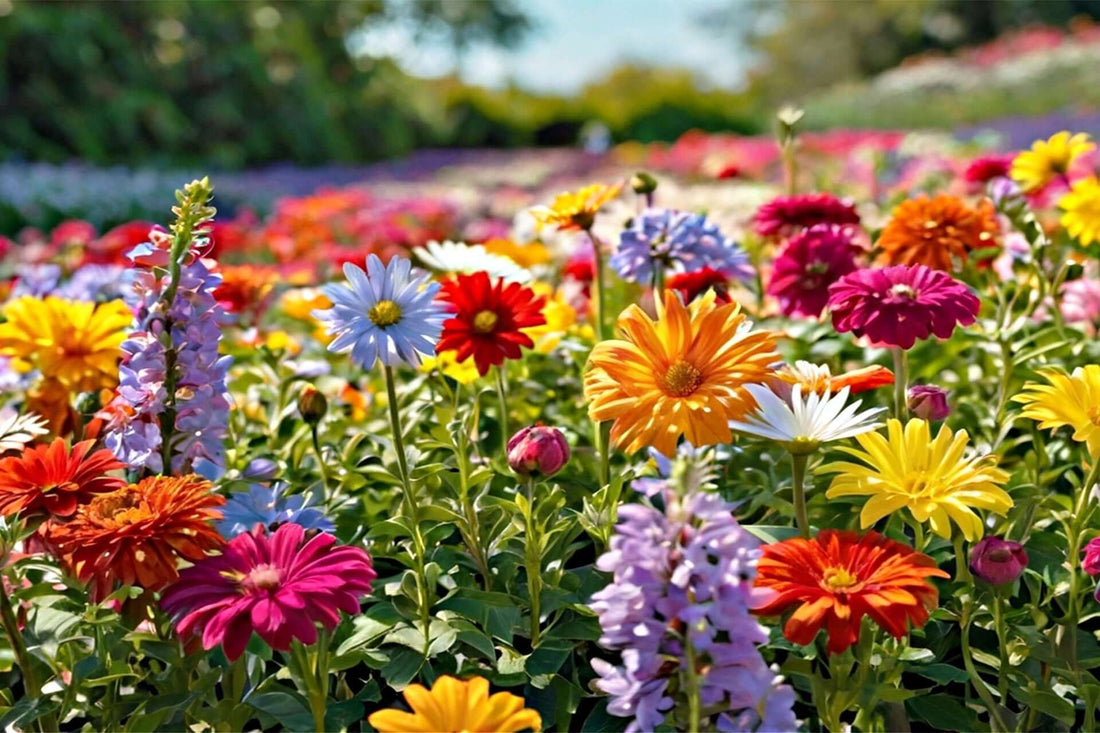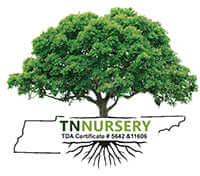
Embracing Spring with Native Garden Plants
Share
Native Perennials Bring Distinct Beauty to Spring Gardens
As spring brings new beginnings we can best honor this time by planting gardens filled with native plant species. Native perennials have adapted to local environmental conditions which makes them both easy to maintain and an environmentally sound choice for gardening. Native plants establish a welcoming environment for pollinators and birds as well as other helpful wildlife while maintaining a garden that continues to flourish sustainably each year.
Trillium stands out as a popular woodland perennial that blooms in springtime with three-petaled flowers appearing in white, pink, and red colors. The success of these shade-loving plants in rich and well-draining soil makes them perfect additions to naturalized woodland gardens. Though they vanish quickly from our sight, their appearance signals the start of growing season and the arrival of warmer weather. Bloodroot emerges as one of the first spring flowers to bloom with its pristine white petals. Being part of the poppy family this plant spreads quickly and serves as an outstanding ground cover in shaded garden areas.
Clusters of cheerful yellow flowers from Golden Alexanders brighten sunny borders. The presence of this plant species as a host plant for the black swallowtail butterfly creates visual beauty in gardens while supporting crucial pollinators. Woodland Phlox, commonly called Wild Blue Phlox, displays soft blue and purple colors that cover garden beds completely. This variety grows into elegant flower clusters that butterflies and hummingbirds visit during early spring while its creeping relative does not.
Columbine's delicate native petals with their unique spurs make every spring garden complete with their vibrant dance in the breeze. Hummingbirds love Columbine because it comes in multiple colors like red, yellow, and purple. Both full sun exposure and partial shade conditions allow this plant to grow well which makes it suitable for different types of gardens. Dutchman’s Breeches brings a playful element to woodland gardens with its fragile white flowers which mimic pantaloons suspended for drying. The beautiful flowers disappear when summer heat sets in and are replaced by a dense green foliage carpet.
Native shrubs and trees serve as the perfect elements to enhance your spring landscape
Native shrubs and trees bring depth and texture to spring gardens while ensuring long-lasting visual appeal beyond the foundational perennials. The earliest flowering native shrubs start blooming at the season's onset to supply crucial nectar to pollinators that are recovering from winter dormancy. Eastern Redbud stands out as an enchanting small tree due to its stunning pink floral display. As the bare branches stand before heart-shaped leaves unfold they become adorned with rosy flower clusters that form a stunning spring display.
Serviceberry stands out as a multi-season performer whose early spring white blossoms lead to fruiting edible berries enjoyed by both birds and people. This tree maintains its dramatic presence throughout the cooler months thanks to its vibrant autumn foliage. Spicebush stands out as a captivating native shrub which grows well under the canopy of woodland areas. Yellow flowers of this species bloom before its foliage develops to produce a bright golden effect in early spring gardens. It additionally acts as a host plant for the spicebush swallowtail butterfly.
Carolina Allspice provides landscape designers with its aromatic, deep burgundy flowers that smell like clove. The shrub requires minimal upkeep and withstands droughts while prospering in different environments which makes it suitable for beginners and skilled gardeners alike. Sweetshrub stands out as a fragrant native plant which attracts pollinators through its aromatic blossoms while it adds rustic charm to garden beds.
Silky Dogwood and Buttonbush should be planted in regions that receive high amounts of rainfall. These moisture-loving shrubs develop clusters of nectar-rich blooms while providing food and shelter for birds during every season. Buttonbush stands out in gardens with its distinctive spherical white blooms that look like pincushions and serve as an excellent talking point for visitors. Silky Dogwood attracts songbirds with its creamy flowers and blue-tinged berries while serving as a strong erosion prevention solution for stream banks and rain gardens.
Develop a spring garden that flourishes through native plant selection
A successful spring garden of native plants emerges through careful planning and appropriate plant choices. Native plant gardens differ from traditional gardens because they use naturalistic designs to combine perennials, shrubs, and trees that simulate local ecosystems. Successful gardening depends on knowing each species' unique requirements for light exposure and soil and water preferences.
Native gardens thrive when they feature multi-layered plantings with towering trees and shrubs in the rear and shorter perennials at the front. Plants that bloom during various stages of spring provide a sustained display of vivid colors and visual appeal. The combination of Virginia Bluebells and Wild Geranium results in an extended spring floral display that lasts until late spring. The combination of Foamflower and Celandine Poppy develops a rich textured ground cover which performs best in shaded woodland areas.
Organize plants that share the same flowering period into groups instead of distributing them randomly to better draw pollinators. The approach allows bees, butterflies, and hummingbirds to efficiently find and feed from various flowers while conserving their energy. Native pollinators find an excellent early-season feeding area in an area where Wild Columbine grows alongside Golden Ragwort.
Native grasses like Little Bluestem and Purple Love Grass create garden movement and structure while sustaining butterfly larvae. The grasses protect the soil from erosion while at the same time they boost ecological biodiversity. Moss Phlox creates a cascading effect over rocks and retaining walls while adding vibrant pink and purple hues to early spring landscapes when used in pathway and border designs.
Native plant gardening requires minimal maintenance which stands as one of its most significant benefits. Native species need minimal additional watering or fertilization after establishment because they are naturally adapted to their local environment. Native plants demonstrate resilience to pests and diseases which makes them able to flourish without extensive care in contrast to non-native ornamentals.
Your spring garden becomes an ecologically vibrant habitat for wildlife when you choose native plants and it also produces an impressive seasonal show. You can grow a sunny meadow with Coreopsis and Black Cohosh or a shaded garden with Trillium and Ferns because the options remain limitless. Your native garden transforms into a stunning representation of natural beauty and resilience as spring brings forth blooming buds and emerging flowers.
